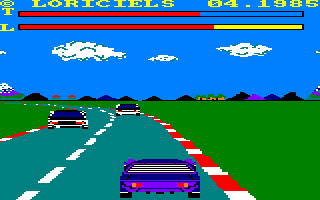
Grand Prix Rally II
(Amsoft/Loriciels, 1985)
This is one of the earlier racing games where you have to beat the clock to complete ten stages, and you’ll certainly know it when you look at the crude graphics and lack of scenery. It’s a really simple game – just avoid the cars and negotiate the bends properly. The first four stages shouldn’t pose much of a problem; it’s when you come to the fifth stage, which is set at night, that the cars become almost invisible. Each stage is much the same as the last one and the other cars are always the same. The facility to edit and save your own tracks doesn’t interest me, either.
![]() Watch a YouTube video of this game by:
Xyphoe.
Watch a YouTube video of this game by:
Xyphoe.
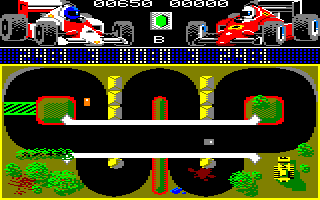
Grand Prix Simulator
(Code Masters, 1987)
Not this! The tracks in this game are viewed from above, and you have to buzz your ‘car’ (which looks exactly like a box, by the way) around the track within the time limit to go to the next one. The trouble is that your car is impossible to control and the track must have black ice all over it, making it ridiculously difficult to progress – well, that’s what I think. The pictures of the McLaren and Ferrari at the top are nice, but the rest of the graphics aren’t as good. The tune and digitised speech (“three... two... one... go!”) are both superb, though, but that doesn’t make the game any better for it.
See also: Grand Prix Simulator 2.
![]() Watch YouTube videos of this game by:
The Oliver Twins,
Xyphoe.
Watch YouTube videos of this game by:
The Oliver Twins,
Xyphoe.
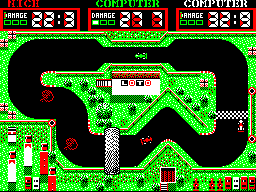
Grand Prix Simulator 2
(Code Masters, 1989)
Time to go racing once again as you try to complete three laps of each track (nine of them in total) before your time runs out. The time you get for each track depends on how well you did on the previous one, so it’s important to do as well as you can on all the tracks. The main differences between this game and the original are that up to three players can take part, and that the graphics are in four-colour mode – and they’re much better for it! The cars are still a bit tricky to control, but if you keep practising, you will get somewhere.
See also: Grand Prix Simulator.
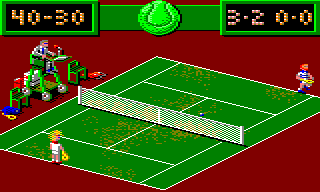
Grand Prix Tennis
(Mastertronic, 1987)
This tennis game (titled Lawn Tennis on the loading screen) is both basic and mediocre. For a start, there are no options to allow you to customise the game, so you are restricted to playing a singles match on a grass court. The two players, who the game refers to as Bjorn and Lee, don’t even swap ends during the match! The problems don’t end there, though. It’s easy to serve aces and score lots of points, but at the same time, the isometric viewpoint makes it difficult to determine where the ball is going and to position yourself accordingly. The graphics are OK, and the music on the menu is rather nice, but it’s not an enjoyable game to play at all, especially if you’re using the keyboard controls rather than the joystick.
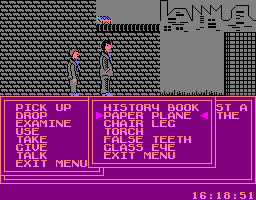
Grange Hill
(Argus Press Software, 1987)
Gonch’s Walkman has been confiscated again, and if his mum finds out, he will be in big trouble. Along with his friend Hollo, he decides to break into Grange Hill and retrieve it. This is an arcade adventure in which you wander around, looking for objects and finding what they are used for and where to use them. The program uses menus in order to accomplish commands, and you can also enter commands directly when you want to use objects or talk to people, although the parser is very limited indeed. The music is really groovy (although unfortunately it’s not the old Grange Hill theme tune). On the other hand, the parser and the plethora of hazards which end the game instantly make the game frustrating to play, and the graphics are fairly poor as well.
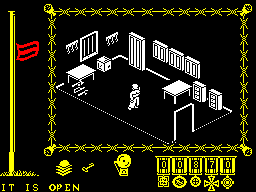
The Great Escape
(Ocean, 1986)
The year is 1942, and you are a prisoner of war, incarcerated in a German camp. How will you escape? Guards patrol the camp day and night, but by watching their movements and becoming familiar with the daily routine, and exploring the layout of the camp, you can work out how to minimise your chances of being detected – and if you are caught, you’ll be placed in solitary confinement for a while and any objects you are carrying will be confiscated. This game is regarded as a classic, but the CPC version is unfortunately a Spectrum port and it suffers accordingly. The concept is original, but the isometric graphics are displayed in a single colour and the scrolling is very slow indeed. As a result, it takes ages to move from one place to another, and I reckon that the majority of players will not have the patience to play it fully.
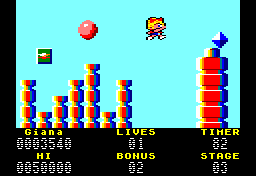
The Great Giana Sisters
(Rainbow Arts, 1988)
Giana and Maria are dreaming, and in their dream, they enter a world full of platforms and cute monsters which they can kill by bouncing on their heads. Some of the platforms also reveal coins if you hit them with your head. There are also diamonds to collect, but make sure you don’t fall off the platforms! Yes, I know what you’re thinking. “This is Super Mario Bros.!” It is very similar indeed; in fact, it’s so similar that Nintendo sued Rainbow Arts and won, and the game was withdrawn from the shelves after about two weeks, so I suppose it’s quite a rare game. The gameplay is as good as its Nintendo equivalent, although the movement is slow and there are no sound effects at all!
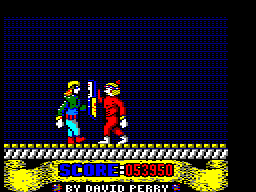
An early game by programming great David Perry, Great Gurianos is a port of the arcade game Gladiator. You play as Gurianos and must walk along, using your sword and shield to either block or destroy incoming monsters, before taking on a selection of rival gladiators. There are a few nice touches: you can block and strike at three different levels – low, mid and high – adding a bit of strategy to the boss battles; armour disappears from you and your opponents as you battle; and there is an excellent tune on the title screen. However, the game is criminally difficult, and the graphics are rather bland and empty. The big killer, though, is that due to lack of space to include an ending, Perry made the final boss invincible!
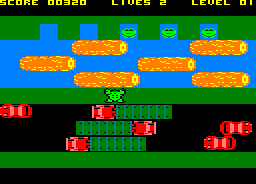
Grebit
(Alternative Software)
This game appeared on one of Alternative’s Classic Arcadia compilations; as far as I know, it wasn’t released on its own. Anyway, you have to guide some frogs safely across a busy road and a river, and place them in boxes on the other side of the river; yes, it’s a Frogger clone. You have to manoeuvre the frogs through the gaps in the fast-moving traffic, and then leap across the logs on the river, and time the leaps into the boxes perfectly, otherwise you lose a life and must start the process again. When you have placed five frogs in the boxes, you go to the next level. The graphics are fairly good, and the sound effects are simple, but the second level is too difficult and it’s not a game you’ll stick with for long.

Take on the might of the enemy’s forces to rescue the captives in this Cold War platformer. Run, jump and shoot your way past their troops to reach your goal. Any collisions means instant death so it turns out to be quite a job – especially when some of your opponents are armed with guns while you are only armed with your trusty combat knife. Luckily, if you manage to bump off a passing handyman you can pick up new weapon, albeit with limited ammunition, such as a flamethrower or a bazooka, which prove to be considerably useful in a sticky situation. A nice looking game with limited sound, it remains difficult but ultimately frustating.
See also: The Vindicator.
![]() Watch YouTube videos of this game by:
Axelino,
ChinnyVision,
Metr81,
Novabug,
Xyphoe.
Watch YouTube videos of this game by:
Axelino,
ChinnyVision,
Metr81,
Novabug,
Xyphoe.
